Ballistic Stretching vs. Static: What Is it and Its Benefits

Some people pump iron purely to have big, bulky muscles. The thing is, strength is only one of many factors that determine your overall physical fitness. Being able to lift a 200-pound barbell is impressive, but we can’t help but feel like we lose some dignity if we can’t touch our toes.
Flexibility is just as important as being able to lift a truck or run faster than one. Not only does having loose muscles improve your overall performance and decrease your risk of strains and sprains, but some studies have reported that flexibility can help lower your blood pressure and reduce the risk of cardiovascular disease.
Most people know to stretch before a workout, but did you know that there are actually many different types of stretches themselves? And we’re not just talking about different muscles being activated. Stretching comes in many different forms, and each can have specific benefits.
Let’s take a look at two of the most beneficial types of stretches, ballistic and static, to uncover the differences and help you craft the perfect warm-up for every activity.
What Is Static Stretching?
If you stretch before a workout, there’s a very good chance you’ve completed a static stretch without even noticing. That’s because these are common and effective ways to improve your flexibility.
As the name implies, static stretches don’t require you to move your body. Instead, you’ll flex a muscle to its nearest point and hold it in place for around 20-30 seconds.
For example, you might do a hamstring stretch by sitting on the ground and reaching towards your toes on one foot, holding for a specified amount of time. Notice how it isolates the hamstring? These stretches are aimed at activating singular muscle groups.
There’s nothing wrong with static stretching. It can help loosen your muscles and reduce the risk of post-workout fatigue, making them essential components of a cool down after your workout. But what about before?
Believe it or not, a study found that conducting static stretches before a workout actually had no effect on reducing the risk of injury. Additionally, it’s been found that static stretches can actually reduce your ability to perform to your best ability in certain strength or aerobic activities.
Don’t discount the static stretch -- it can help improve your flexibility over time. But if the goal of stretching is to increase your range of motion before a workout, you might need to do something else.
What Is Ballistic Stretching?
This is another type of stretch that you’ve probably done before without realizing it had its own special name. Ballistic stretching involves pushing a muscle past its natural range of motion without the assistance of a tool, such as a partner or a resistance band.
You’ve probably done butterfly stretches in gym class where you were told to sit on the floor with your feet together, flapping your knees up and down like a butterfly. This is an example of a ballistic stretch.
Professionals have long worried about ballistic stretching because it can cause injury if performed incorrectly. It doesn’t necessarily allow your muscles to adjust to, or relax, in any position. It might instead tighten your muscles -- which isn’t really what we want to accomplish.
If you’re an advanced athlete, these stretches can help supplement a workout because they often can double as warm-up exercises. With that said, there are few significant benefits compared to other forms of stretching, and your best bet is to leave these to the pros.
Which Is Better: Static or Ballistic Stretching?
Hands down, static stretching is better than ballistic stretching for your workout routine. The reason is that they are much more controlled and effective at maintaining range of motion, especially after your workout. They’re accessible stretches for any population.
Ballistic stretches are advanced and need to be completed almost perfectly to avoid pulling a muscle or straining a joint. Advanced athletes can do them under the supervision of personal trainers, but they are not appropriate for the general population.
Alternative to Ballistic Stretching
Since ballistic stretches have more drawbacks than advantages, it's best to just ditch them. However, stretches that incorporate movement are even more effective than static stretches for improving dynamic flexibility and preparing for more vigorous exercise.
Dynamic stretches involve moving parts of the body and gently to gradually increase the reach and speed of the movement. An example might be gently swinging your legs back and forth in a controlled movement.
These obtain the same benefits of a ballistic stretch without forcing your muscles into unnatural positions. When doing dynamic stretches, you want to stop doing the movement when your muscle reaches its maximal range of motion. Additionally, stop when you feel tired, as tired muscles will not reach their peak performance.
Incorporating Stretching Into a Warm-Up
Stretching before a workout is great, and most people who are serious about working out know enough to do it ahead of time. However, it shouldn’t be the first thing you do.
Stretching should only occur after you’ve properly warmed up. The act of warming up is exactly what you think. The goal is to raise your core body temperature and heart rate to prepare you for exercise.
It’s especially important before cardio workouts, but you should also do them before strength training. Warming up loosens your muscles which can enhance your overall performance.
After you warm up, you can get into stretching, and static stretches aren’t going to hurt you. But it might be best to do some dynamic stretches instead, as many of these can even double as part of your warm-up.
In addition to a proper warm-up, it’s equally important to eat right so that you have the energy to take on the toughest of exercises. Here are some of our tips for the most effective foods to eat pre-workout.
Best Static Stretches for Post-Workout
When you work out, your body can’t work fast enough to deliver oxygen to your muscles. In order to compensate, your body uses stored glucose and converts it into oxygen. During the process, a substance called lactic acid is released.
If you’ve ever felt sore after a workout, it’s because of lactic acid build-up in your muscles. This pain is usually only temporary, but it can affect your ability to comfortably work out the next day.
Luckily, you can break up lactic acid through stretching. This is why working out after your workout is essential, and static stretches can hold your muscles to the point of maximum flexion long enough for the lactic acid to naturally disperse.
It’s important to stretch all over, but you definitely want to pay a little extra attention to the muscles that you worked out the most.
For example, if you just went for a run or did some intense rowing, you’ll want to stretch your hamstrings, quadriceps, and calves to reduce soreness. A hip flexor stretch is a great way to work all three.
To do it, just step your left leg forward, keeping both feet straight. Keeping your back straight, stick your right leg back, so it is flat on the floor. You should feel activation in the quad and hamstring of your left leg and some tension in your calf on the right. Hold for 20 seconds and repeat on the other side.
If you just had an intense tricep workout, a tricep stretch will help break up some lactic acid on the back of your arm. Stand with your feet shoulder-width apart and use your right arm to pull your left arm across to the other side of your body. Hold for 20 seconds and repeat on the other arm.
For Peak Improvement
Static stretching and ballistic stretching are two different types of stretches that can be done before or after a workout to increase your flexibility. Static stretching involves flexing a muscle to its furthest point and holding, whereas ballistic movements require you to bounce your muscle past its natural point.
Ballistic stretches have long been associated with injury and aren’t recommended unless you are a trained athlete. Instead, dynamic stretches achieve the same effect through gentle, controlled movements.
Static stretches are best done after a workout to help break up lactic acid, which can cause muscle soreness. Try things like hip flexor stretches after running or tricep stretches after weight training.
Many static stretches can be amplified by using resistance bands such as the Gorilla Bow. And if you need some more ideas for stretches or workouts to really challenge yourself, the Gorilla Bow All-Access Membership has live and on-demand classes for you to build up your arsenal while you build up some muscle.
Sources:
The Importance of Flexibility and Mobility | PennState Kinesiology
Why Does Lactic Acid Build Up in Muscles? And Why Does It Cause Soreness? | Scientific American


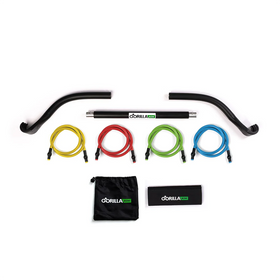
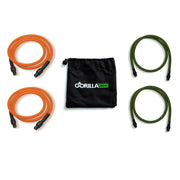
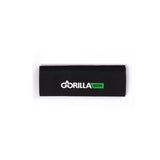
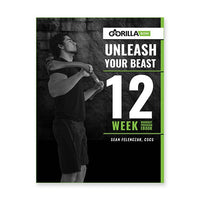
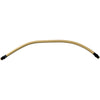



Leave a comment